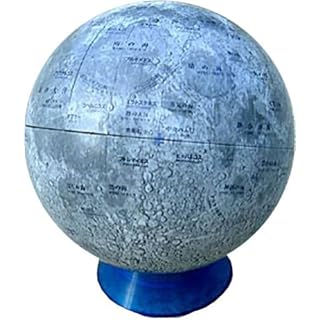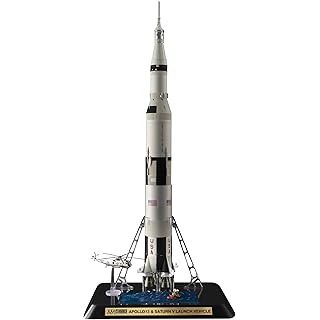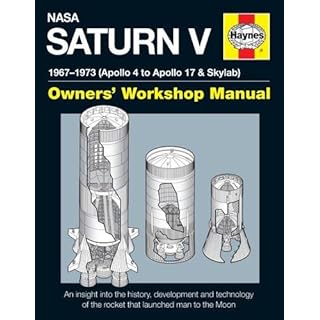Spacecraft-LM Adapter
- Height : 28ft (8.5344m)
- Diameter : top 12ft 10in (3.9116m) - bottom 21ft 8in (6.604m)
- Weight : approximately 4050lb (1.8387ton)
- Manufacturer : North American / Rockwell International
Description


SLA is made of part of four upper panels which can separate, and the fixed panel connected at the top of the third stage of Saturn rocket, S-IVB. This is constructed 1.7-inch thick aluminum honeycomb panels and covered by a layer of cork 30/1000 of an inch thick for insulation.
SLA and SM are fixed on the flange of the SLA upper perimeter with the bolt.


After cutting with charge holders, four upper panels are opened with the power of the pyrotechnic thrusters. Four pyrotechnic thrusters are placed on joint of upper panels, just the top of the fixed panel, And these supplies the power which opens an upper panel only two degree. Then, an upper panel opens slowly at a speed of 33-66 times per second in the outside. Then, these were opened 45 degree, upper panels comes off the hinge.
The spring thrusters are mounted on the outside of the upper panels. When an upper panel comes off, It pushed out panels, and kept away from the body. This spring pushes an upper panel in the direction of about 110 degree at a speed of 5.5 miles per hour from the body.

Separated CSM rotate 180 degree, It rushes docking probe into LM's drogue, and docks. When docking is completed, LM is separated from SLA. Mild charge installed in four connect points between LM and SLA are ignite. A guillotine cutter cuts a signal cable connected with SLA (IU) and LM. Then, LM is pushed out with the power of the spring. The control of the disjunction is done by two control devices installed in the inside of SLA, the side of IU.
When disjunction is completed, CSM and LM jet RCS, and it goes away from S-IVB. S-IVB that a duty was finished, releases the left fuel soon in the space, and begins rotation with the reaction. Because it is going in orbit to the moon, S-IVB follows CSM and arrives at the moon, too. And, it falls into the surface of the moon, generates small moonquake (lunar earthquake), gives a chance to examine composition of moon to scientists, it's duty is finished.





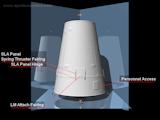

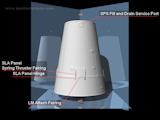
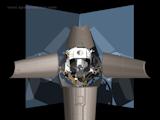
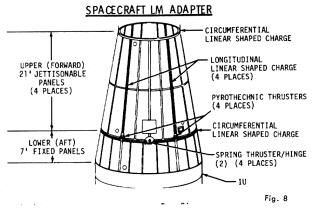

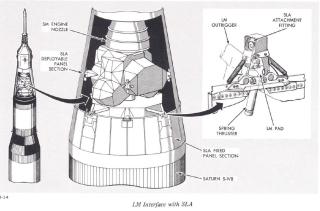
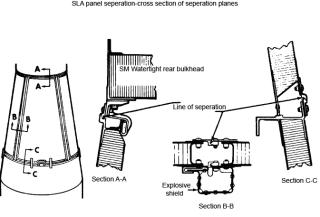

.jpg)




